Maya adventure

By Jaimy de Vries
Merida is the city in Yucatan to learn more about the Mayan history and culture. The Maya’s are the oldest civilization and their ruins are a must to explore while you’re visiting Yucatan. To learn more about the Maya’s we visited the Gran Museum Del Mundo Maya, enjoyed the festivals at the plaza and went on a tour to visit two Mayan ruins: Kabah and Uxmal. It was one of our favorite things to do in Mexico. I’m impressed by their lifestyle with so much respect for nature and animals. It also has something in common with other cultures, like the Inca’s.
We went to Merida in the hope to learn more about the Maya’s. Of course we went to the Gran Museum Del Mundo Maya. The museum starts with a story of where the Mayans are now and goes back to the Mayan origin story. It’s a big museum that holds a collection over 1.160 pieces of textiles, religious elements, pieces and different objects and tools. The museum also presents many animated videos. Unfortunate all the animated videos – that looked really interesting btw – was all in Spanish. So difficult for us to follow. But we learned some interesting stuff about the Maya’s.
The Mayas had lived in the southern part of Mexico as well as in Belize, Guatemala and part of Honduras. The surface of the Mayas was predominately flat, with freshwater underground. It apparent uniformity houses jungle,
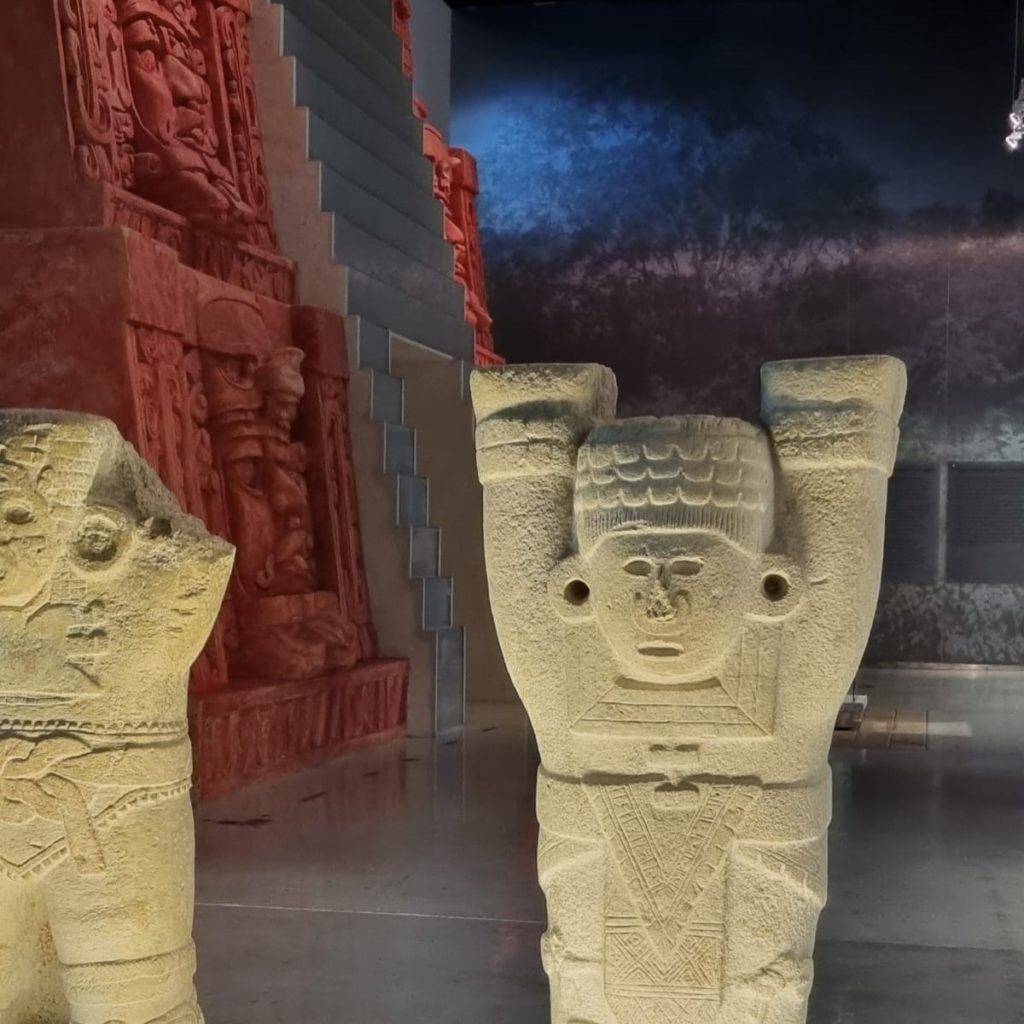
swamps, marshes and savannahs inhabited by a rich variety of animals. From ancient times the Mayas were aware of this diversity and they captured it in art filled with both realism and extremely personal and complex interpretations. This is something you see back in the clothing (hats representing an animal) and the architecture (animals represented). The jaguar for example is a representation of the divine, symbol and protection of their leaders.
The Mayas did not mysteriously disappear. Luckily and very impressive the Maya’s still live! The Maya’s had a hard time with the Spanish invasion. Before the Spanish invasion the population was around 800.000 individuals. Diseases such as chicken pox or measles, by the year of 1730 the population had been reduced to less than 15% as before. But the Mayas are still around the Yucatan area and more. In Yucatan 30% of the civilization still speak the Mayan language.
Every culture has different standard of beauty. The Mayas had their ow standards too and quite an interesting one too. They deformed the skulls of small children and caused them strabismus. The ones that could afford it submitted themselves to a treatment of dental mutilation to cut their teeth, and occasionally they incrusted in them small beads of jadeite of pyrite. Body paint was a widespread practice: they rubbed in red, aromatic ointments that lasted for days or tattooed their bodies despite the risk of infection. They all wore long hair: men burnt the top part of the hair and braded the rest letting it hang down, while women sported elaborated hairdos that also showed their marital status.
My Maya destiny
A fun thing to do at the museum is that you can see what you’re destiny should’ve been in the Maya world, depending on your birth date. Mine was:
- Day name: Muluk – ‘water’ or perhaps ‘moon’.
- My animal association: shark.
- My color is red and my destination is east.
- Characteristics: These people are very helpful to others. They sacrifice themselves to the cause most dear to them, usually family or nation. Moon and water people, they need to live by the sea, lake or river. They are strong, creative, community oriented, imaginative and make money wherever they go. Social and communicative.
Sacred places
So we went on a daytrip to Uxmal! Our day trip started with a drive through the jungle. It turns out Yucatan is quite flat. Mainly it’s jungle and wetlands. But it also has many cenotes, white sandy beaches and salt flats. First we went to a cenote called Sambulá, and this was our first ever cenote. Yucatan is known for its many cenotes, that is quite rare in other places around the world. We learned about the existence of a cenote. In the dinosaur age there was a meteorite that reached the planet, not that far from Mexico. It created cracks and these got bigger and bigger over time. It got immersed by the ocean. The peninsula started to chance. After the ice age the land got dry and the cracks started to fill up with fresh water – a cenote! Interesting right? Well we were up for a nice fresh swim. After putting our swimsuit on we walked to the cenote. It turned out to be an actual cave. We needed to walk down on a staircase to reach the cenote. It was quite dark and we were not the only one visiting the cenote. There were many bats! The water was really nice: cold and fresh.
For the Mayans the cenotes were their natural water source. And that’s why many of the cities are build next to a cenote. But a cenote was also considered a sacred place, a place of access to the underworld. Different kinds of offerings have been found inside caves and cenotes in Yucatan, such as sculptures, censers, vessels, tools, furniture, ornaments and even skeletal remains. “Ieh skeletons? Creepy!” The sacred cenotes of Chichen Itza was the object of pilgrimage and the scenery of animal and human sacrifices.
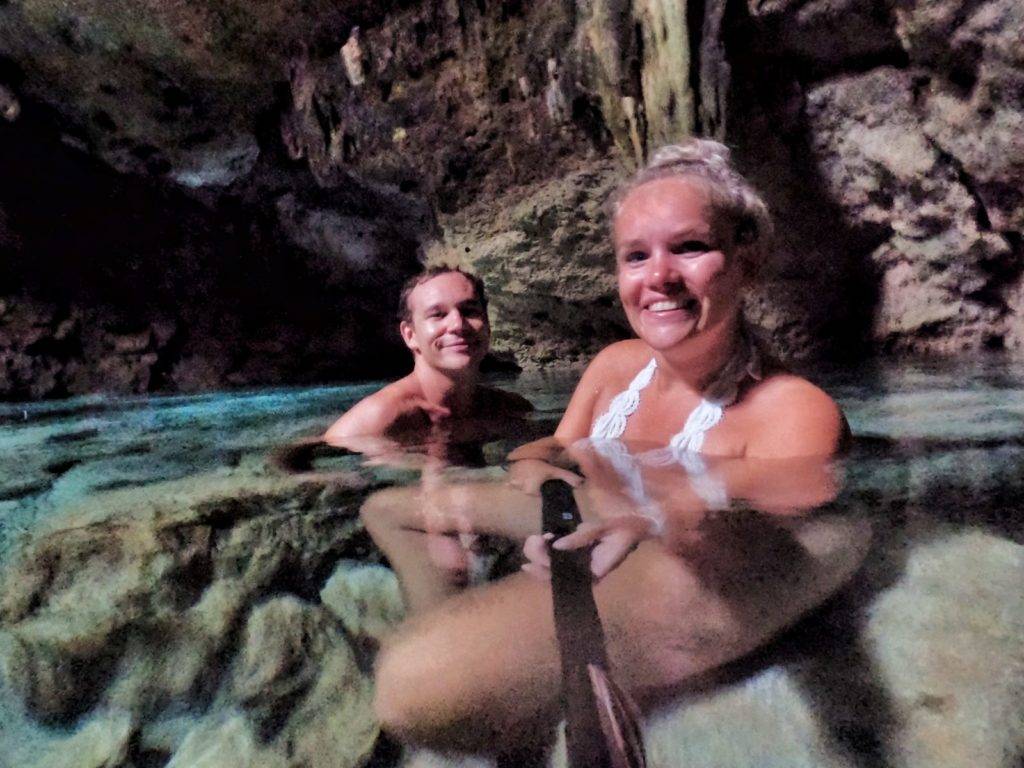
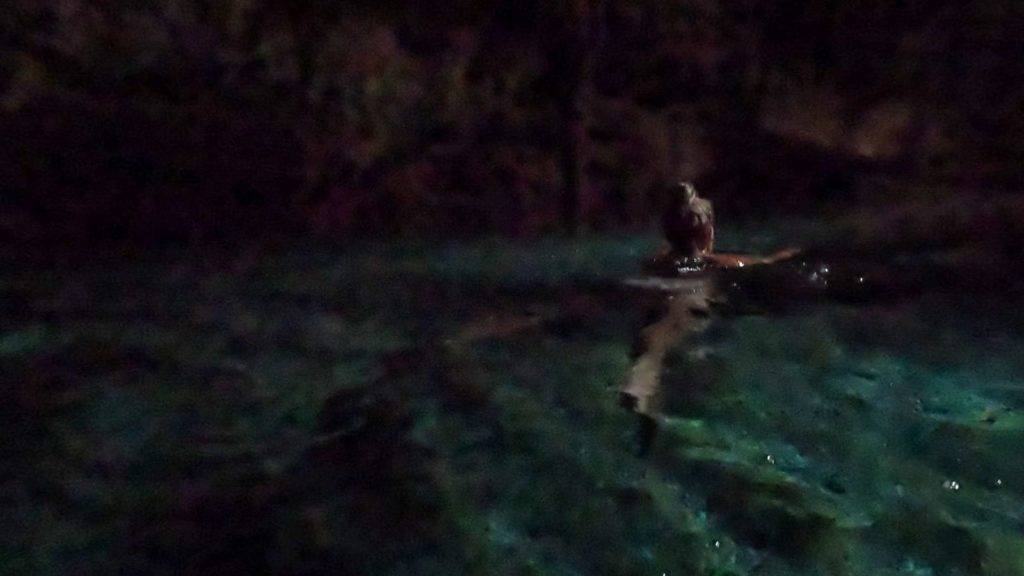
Our next stop was our first Maya ruin, called Kabah. Kabah means strong hand. It was the residence of the ruling family during the Terminal Classic Period and also the place to exercise political and religious power. On our visit we saw archeologist working on the site. Our guide told us that there are many more maya cities and temples, but still hidden in the jungle. The government does not want to invest in discovering, restoring and maintaining new sites, because there are simply too many. The maya’s used limestone to build these cities. We saw that this Mayan ruin was quite damaged and that was because there were trees growing on top of it. This was a quiet site and not so expensive like others and we could climb on the ruins. We took our chance to take some nice pictures.
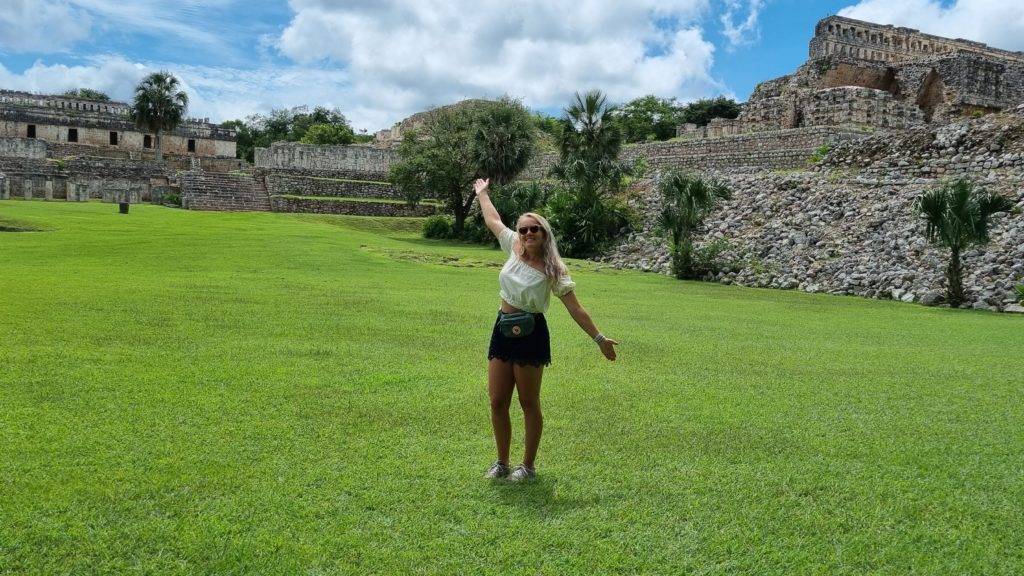
View over the Kabah Mayan ruins
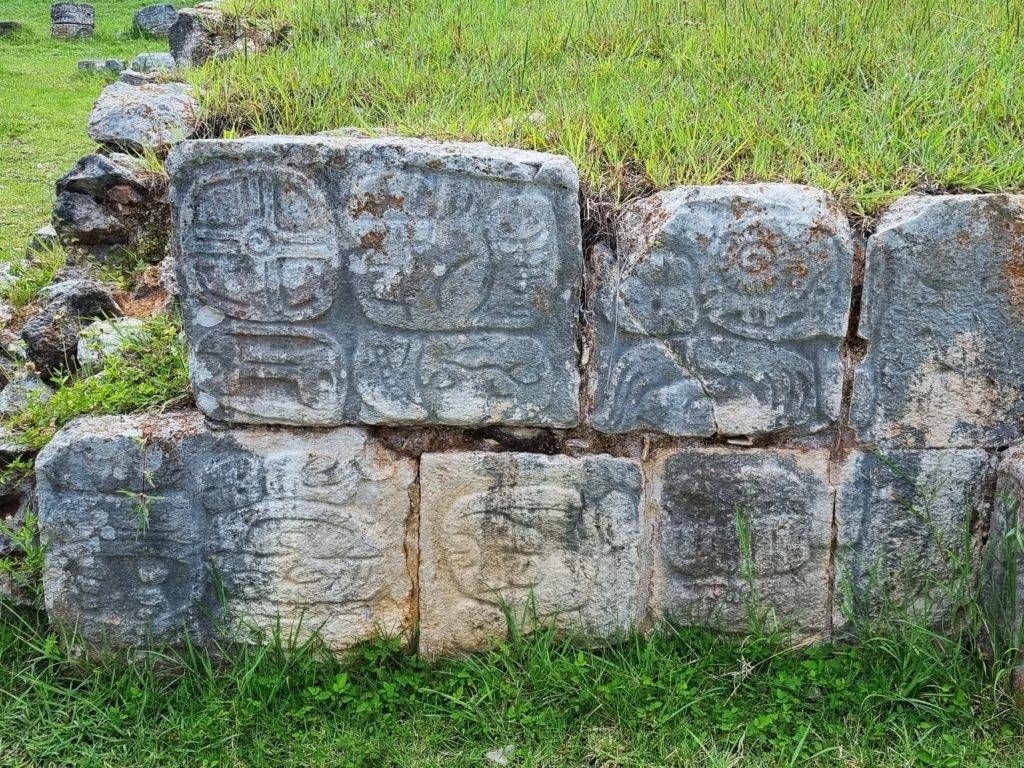
Hieroglyph symbols
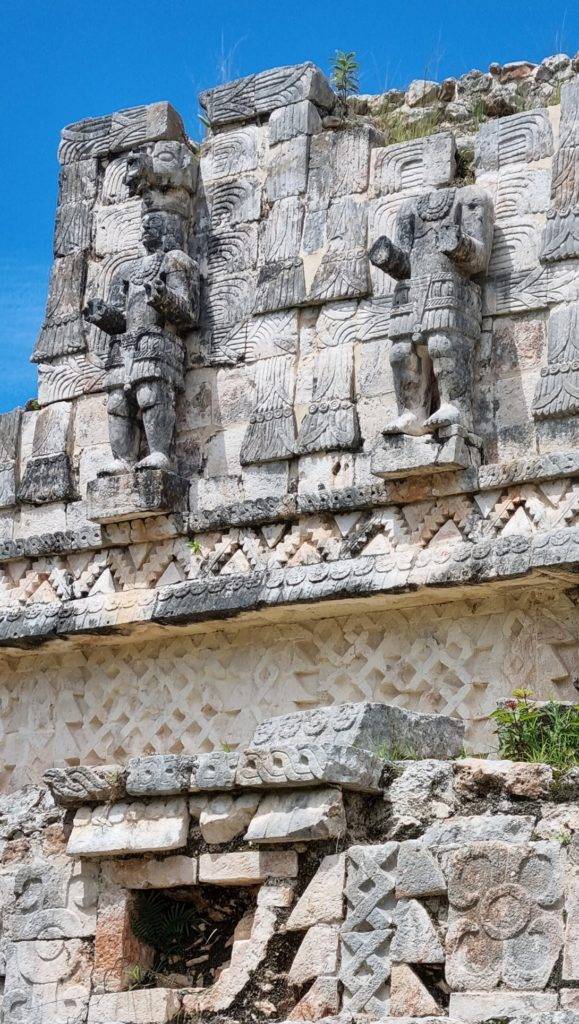
Damaged ruin
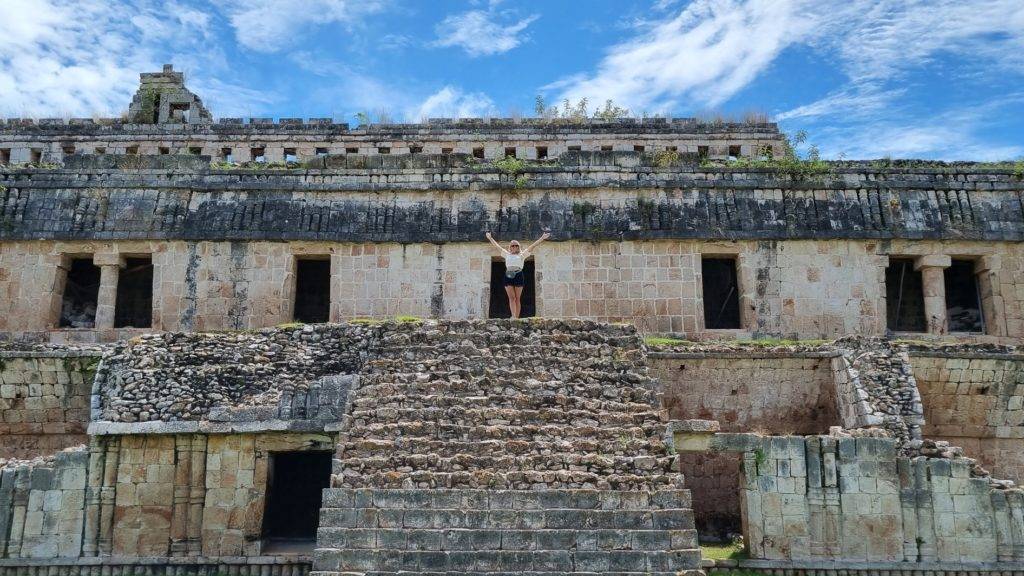
Climbing a ruin
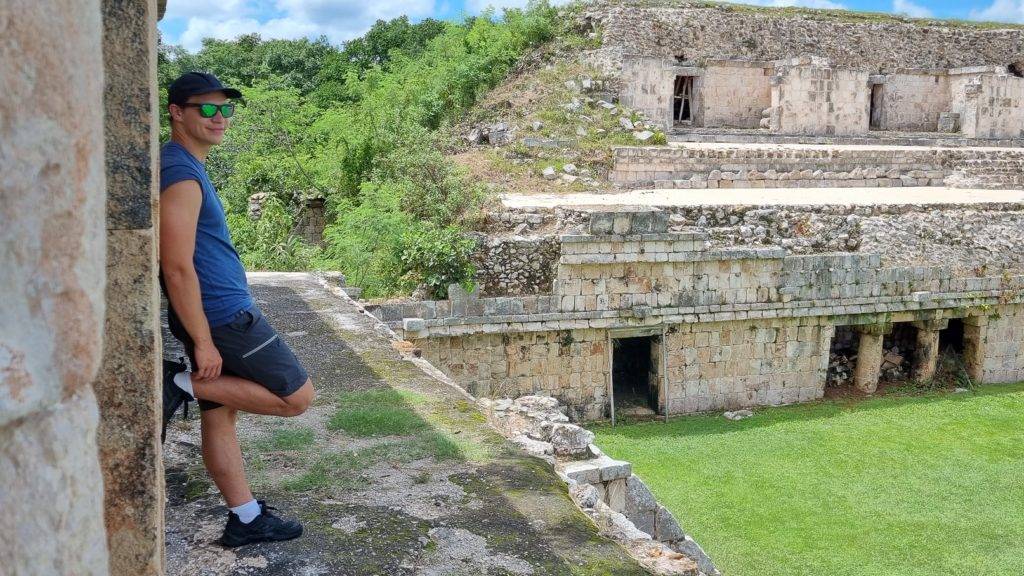
Enjoying the view from a “ruine perspective”
And then our main event: Uxmal, the second biggest Mayan city in Yucatan. Uxmal is an ancient Mayan city. It was one of the most important Mayan cities, inhabited between 600-900 AD by a population of around 20,000 Maya at its peak. It was abandoned in the 1500s after the Spanish conquest. The name ‘Uxmal’ means ‘thrice-built’ in Mayan, in reference to the city’s main structure which was built on top of existing pyramids. The architecture and design of the site’s structures is known as the Puuc style, which is characterized by smooth walls, stucco finishing and numerous depictions of Chaac – the Mayan god of rain.
The architecture is impressive. Especially if you think that they made this many centuries ago. The architectural structures has a cultural meaning. Like the gods are presented in the structures (mainly Chaac, the water god) and they represented their believe that the planet was flat and it has 9 levels: earth, heaven and several levels of the underworld. This is represented in their buildings. For example the impressive Magicians pyramid. The entrance is in the shape of a mouth and the stair is the tongue. It symbolize the entrance to the underworld.
They also thought about the auditory that they adjusted in their architecture From many points you could hear a big echo. This was a great way to communicate to each other.
There are also many funny stories about the Mayan ruins. All these structures are so old, we don’t know for sure what it really meant and how life was here. We have an idea, due to the good work of archaeologist, but still it’s a mystery. And that’s why people make up mysterious stories. Like the story about the Magicians pyramid. They say it’s build in one night by a little man, that’s why they call it the magicians pyramid.
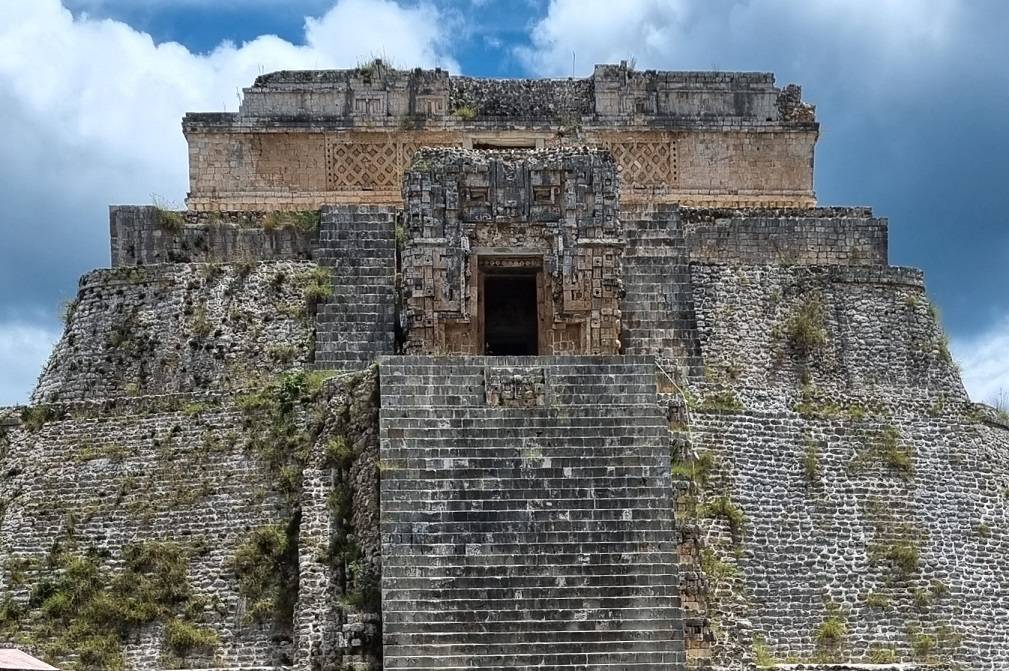
Magicians Pyramid
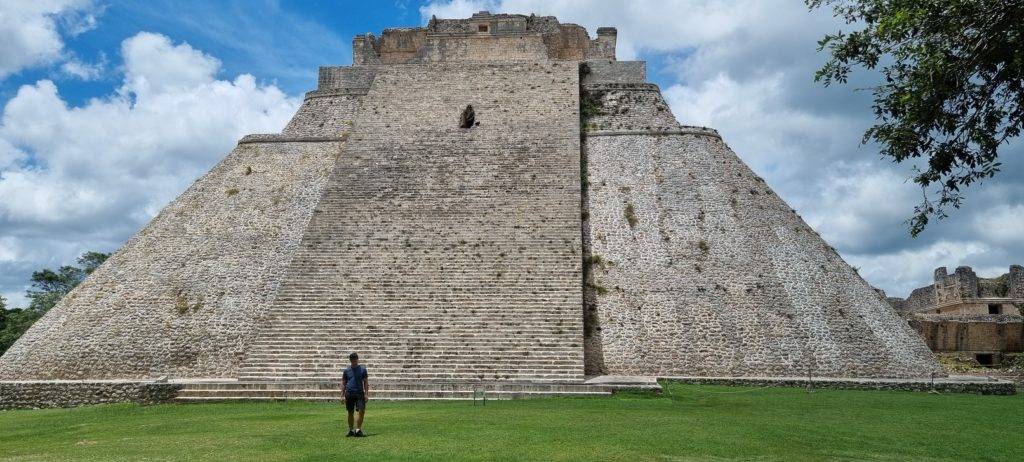
The size of the Magicians Pyramid
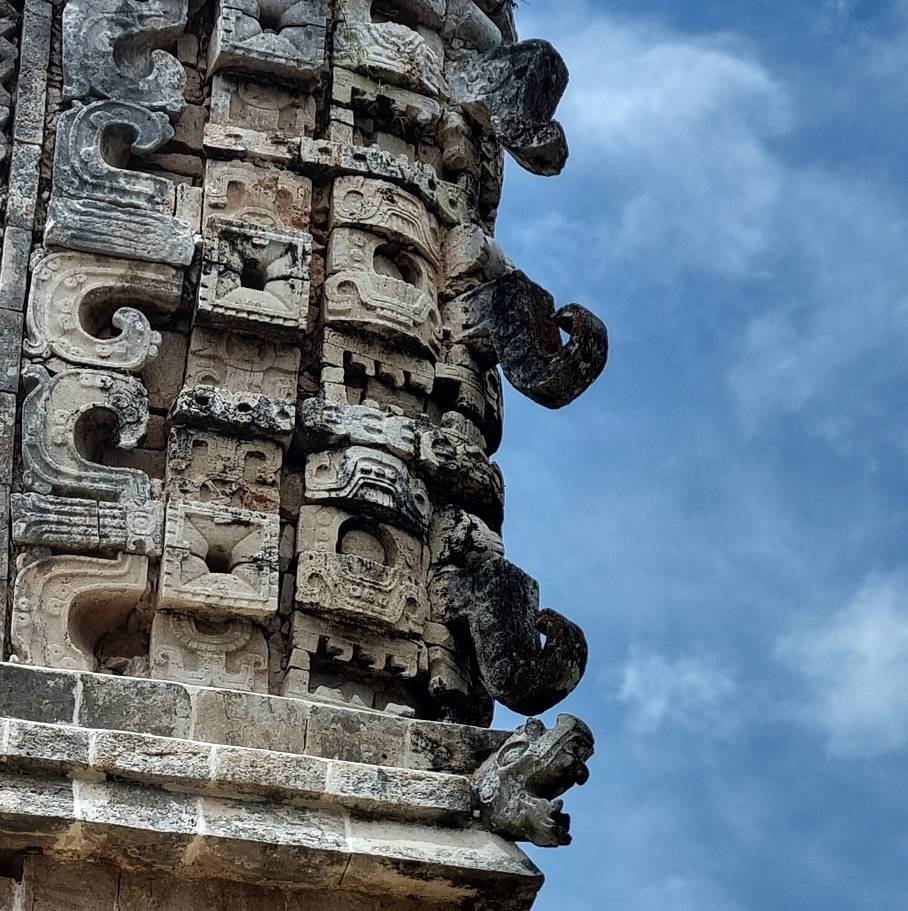
Chaac, the watergod
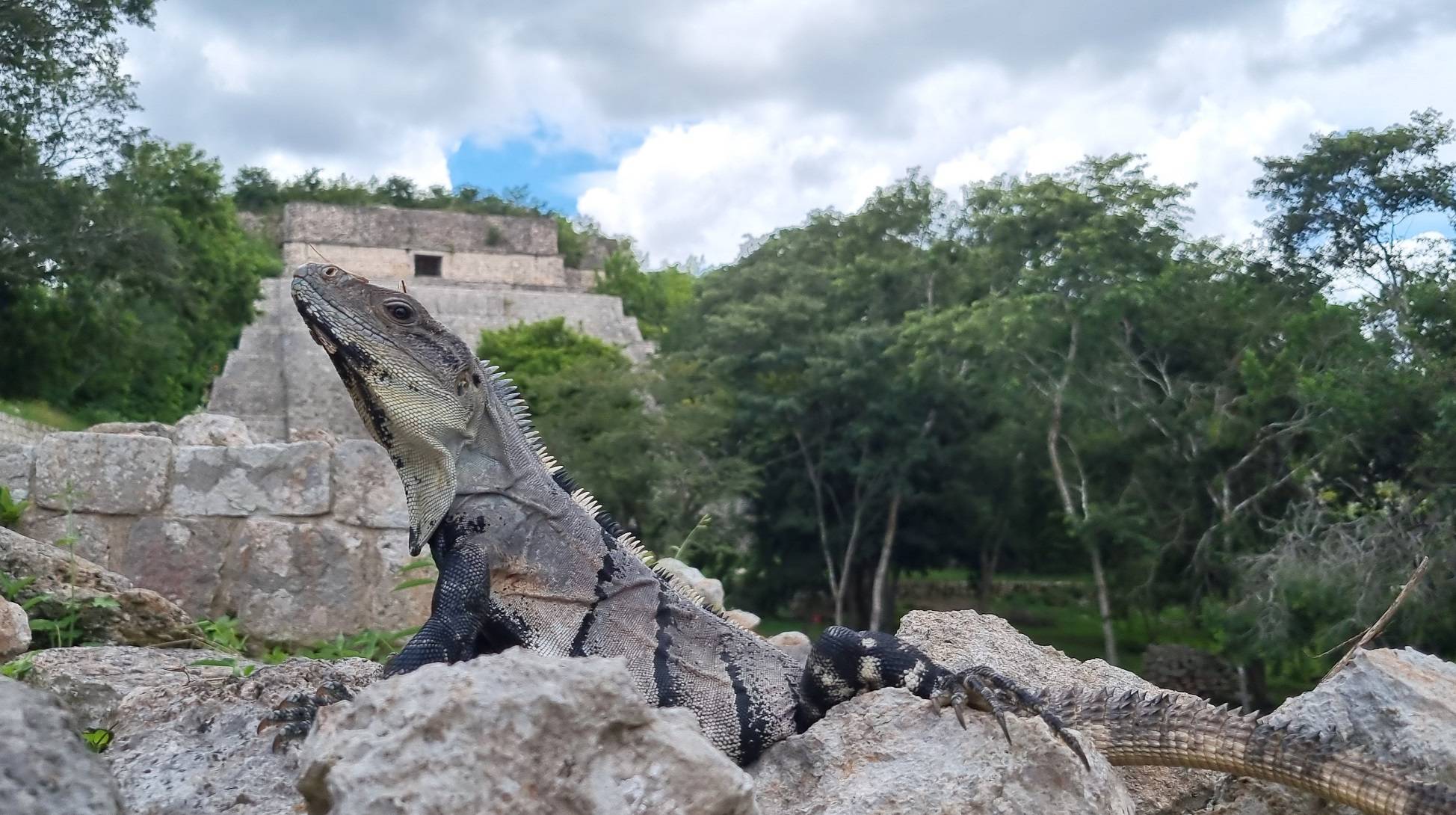
Not the Mayans live at the ruins, but the Iguana’s took over!
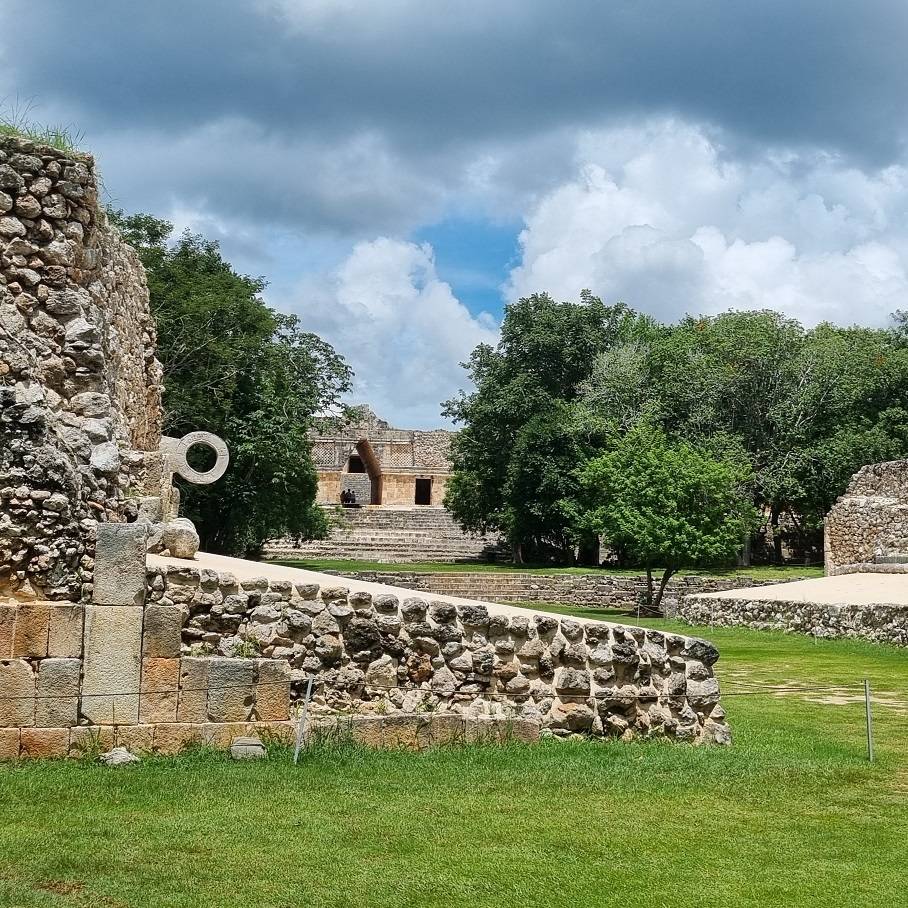
PokTaPok ball court

Beautiful carvings in the limestone ruins
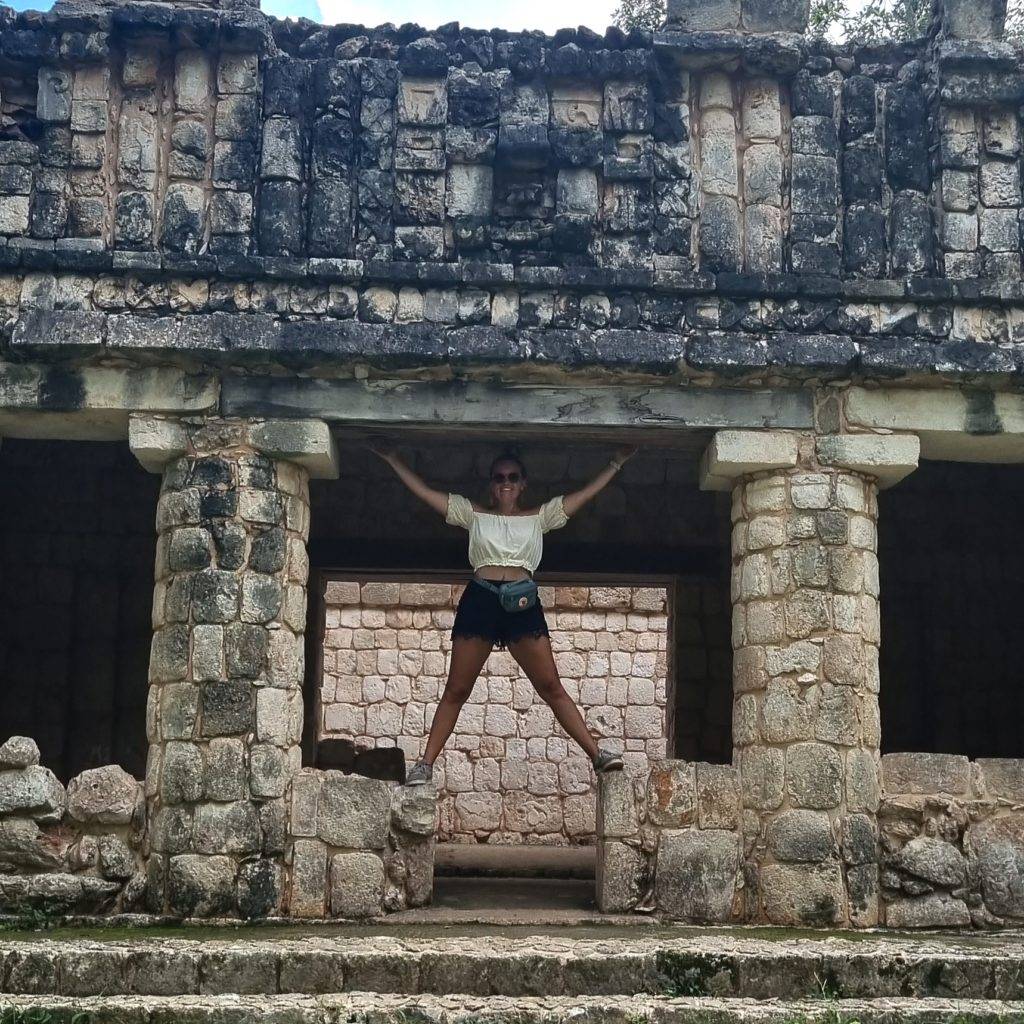
Holding up the ruins
A taste of the Mayan life
At last we had a visit to a chocolate museum called Choco story. I visited some chocolate museums during my travels in Argentina and Peru, but this one was amazing. Of course they tell you about the history and making of chocolate, but this museum had a different perspective: the one from the Mayas. And there was much to see: they hold a ceremonial ritual to honor the gods for the chocolate, we could see a show how they make the chocolate and we could try some.
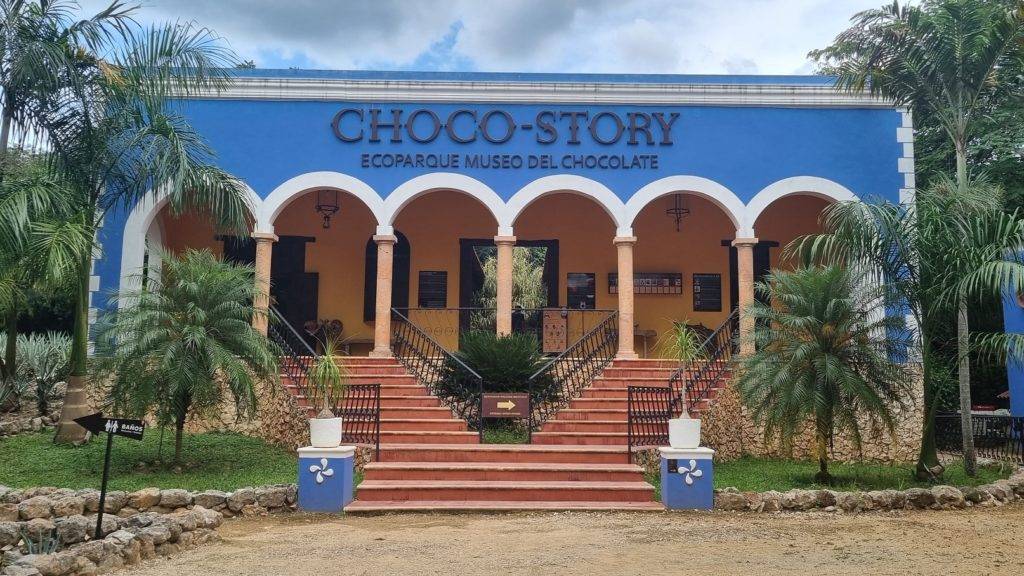
Entrance Choco story
First we tried it pure, but its quite bitter. We could add sugar, cinnamon or chili. We preferred sugar and cinnamon. The local thing is to drink it with chili, that’s how the Maya’s did it. But I tried some chocolate with chili peppers before, and it’s not my thing. And of course the museum was very informative. We learned a lot about chocolate and the Mayas. The history of chocolate starts here, because the maya’s discovered it’s use (2000 BC) and made a chocolate drink from it. They drank it as a hot drink. The drank was prepared by roasting, peeling and grinding cocoa beans. The obtained paste was then mixed with water and spices.
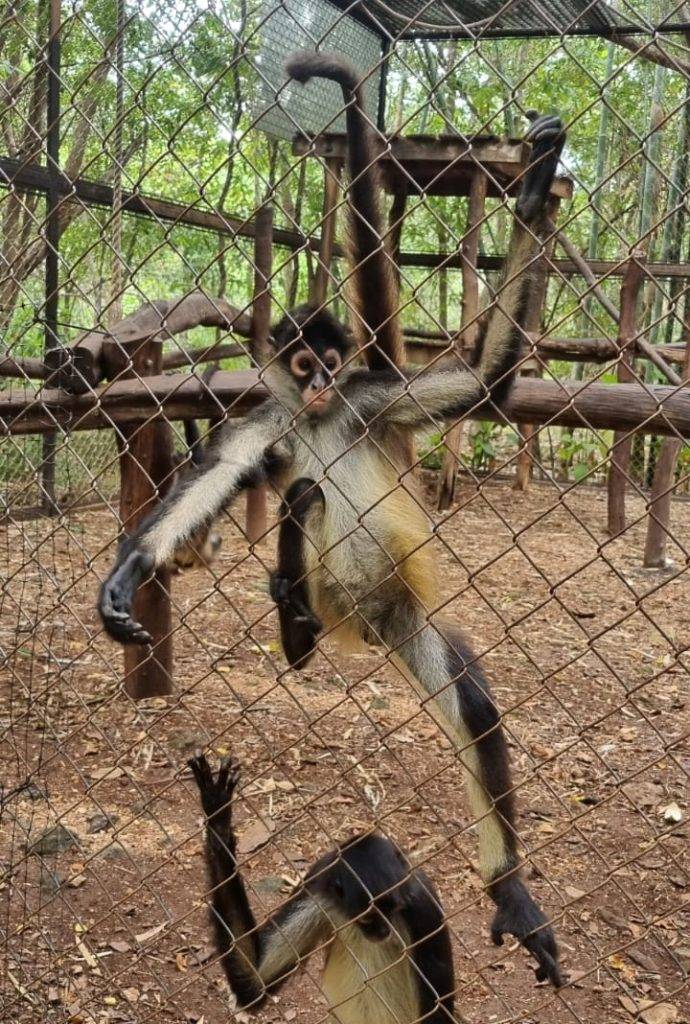
Feeding monkeys
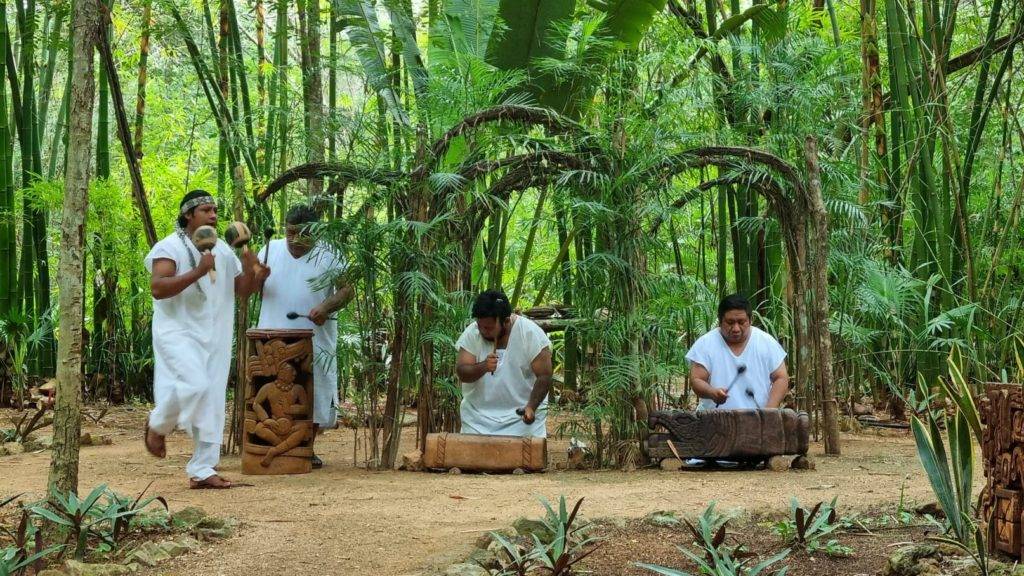
A choco ritual
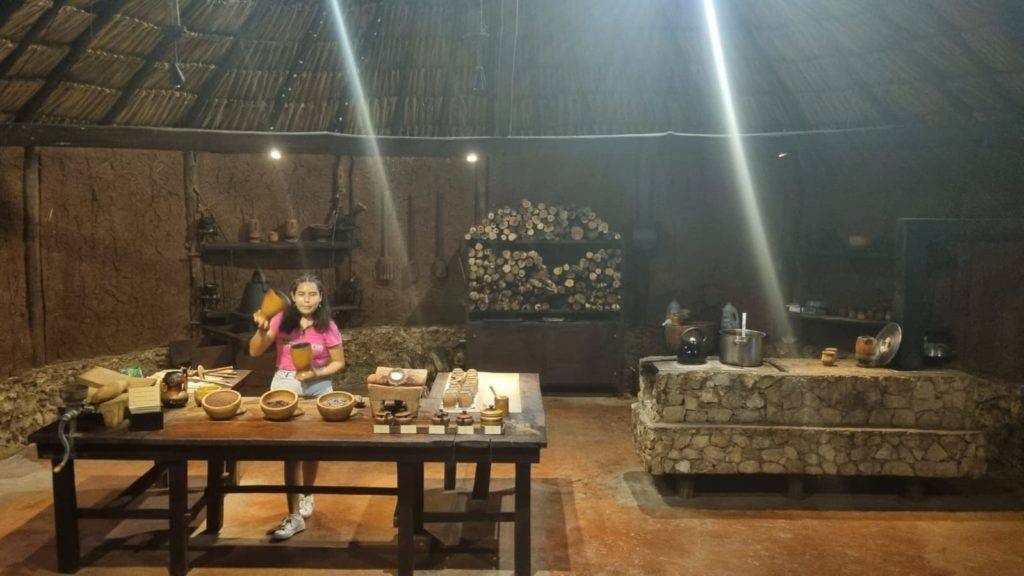
Preparing the choco drink
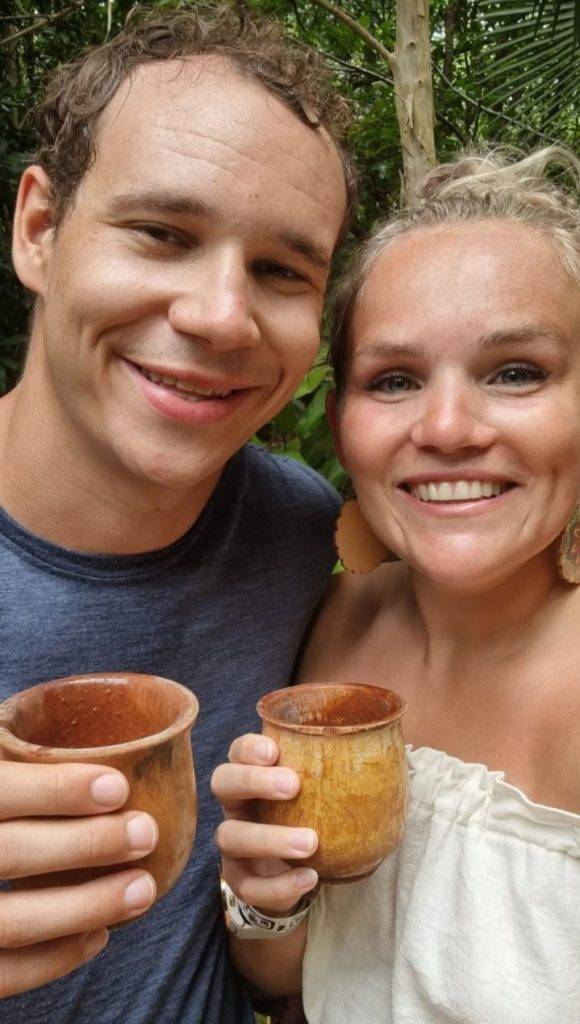
Choco cheers to you!
The pre-Hispanic societies was founded on deep religious beliefs and natural phenomena. They believed in gods and different layers of the cosmos, including the underworld. They believed that at night the sun had to unleash a ferocious battle against the beings of the underworld, and always coming out victorious to rise once again in the morning. Only then there would be light in the world. In order to strengthen the sun, the Mayas were offering it human hearts as food insuring that life would continue. Many other gods also had to be fed with human blood. Due to this close connection with natural cycles, human sacrifices were a common practice. But it’s maybe not what you think, these sacrifices were mostly voluntaries. With celebrations a man drinks several cups of cocoa what will put him into a trance and he offered himself as a sacrifice. Another type of offering was also with a drink made from cocoa beans. During the rites, it was common practice for the priests to cut themselves or to pierce their earlobes or tongue using cactus spines, the tail of a manta ray or an obsidian blade. The blood was spilled over the cocoa beans and mixed into a drink that was offered to the gods.
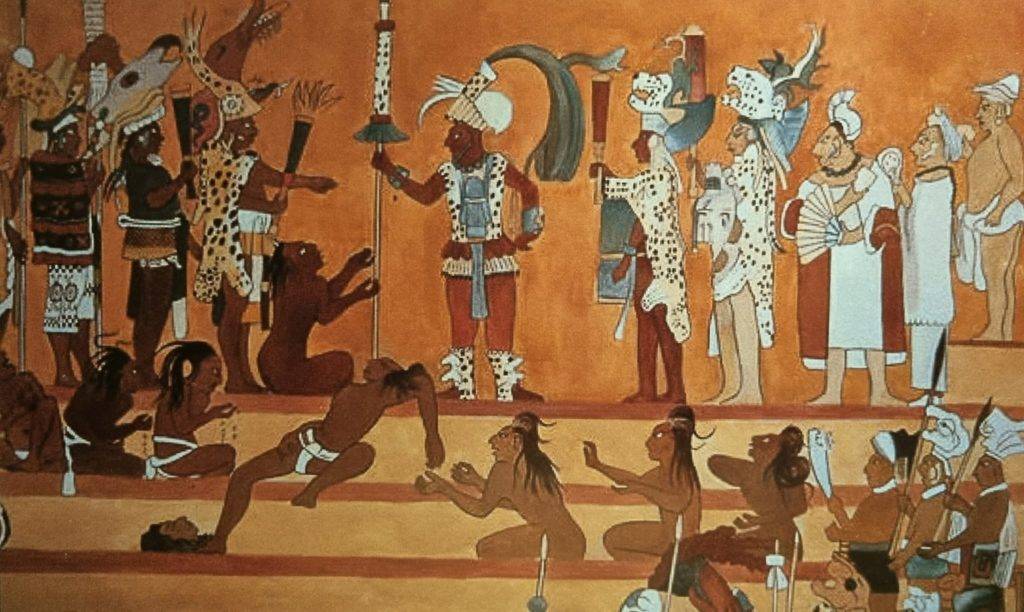
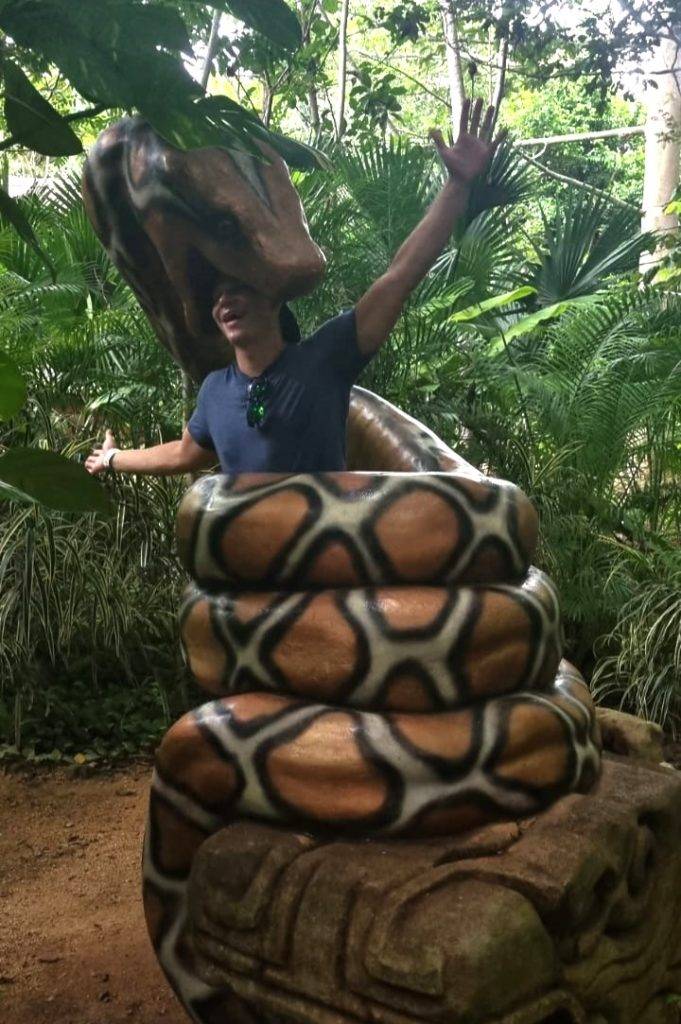
According to the Mayan beliefs trees, animals and men were all on the same level, and had to show mutual respect and live in harmony. The mountains, jungle, springs of water, caves and cenotes were all believed to be holy places where the gods lived. This is something we saw back at the museum. They had lots of rescue animals: white tailed deer’s, a crocodile and two Jaguars! There was one jaguar that was awake and lying down. But the look on his face was so precious. He looked like he wanted to play (or kill me haha). So I did some hide and seek and he reacted to that, that was funny. Jaguars are so beautiful! Magnificent creatures. This is something what the Mayas believed too. As I said before, the jaguar is a representation of the divine, symbol and protection of their leaders.
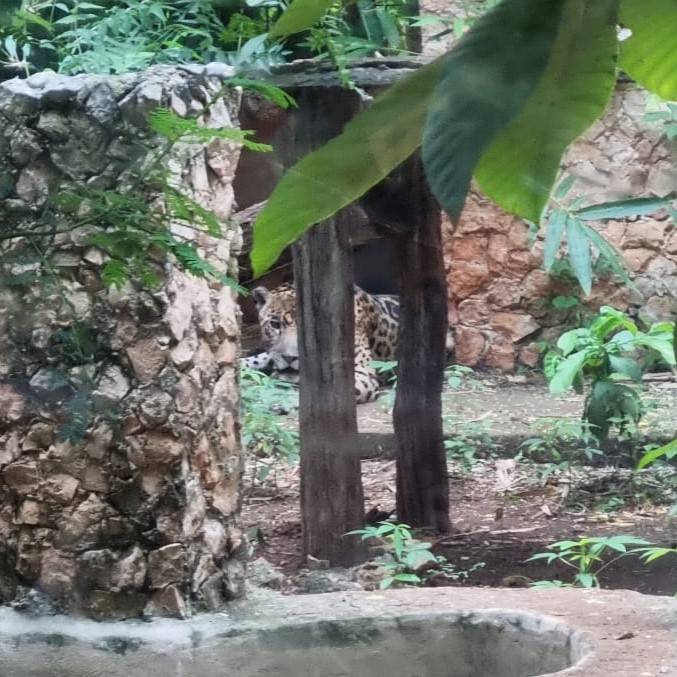
Cocoa was a rare and precious product in the pre-Hispanic America. Because of that it became of type of currency for trades. The Mayans were good traders. They had large markets in big cities. Traders supplied the market by taking long trips, for example Jade and luxurious Quetzal feathers from Guatemala, cotton from northeast Mexico, shells from the coast and cacao from Guatemala and Honduras. With the Spaniards conquering many central American countries, chocolate got introduced in Europe. First only for the elite, but later for the public.